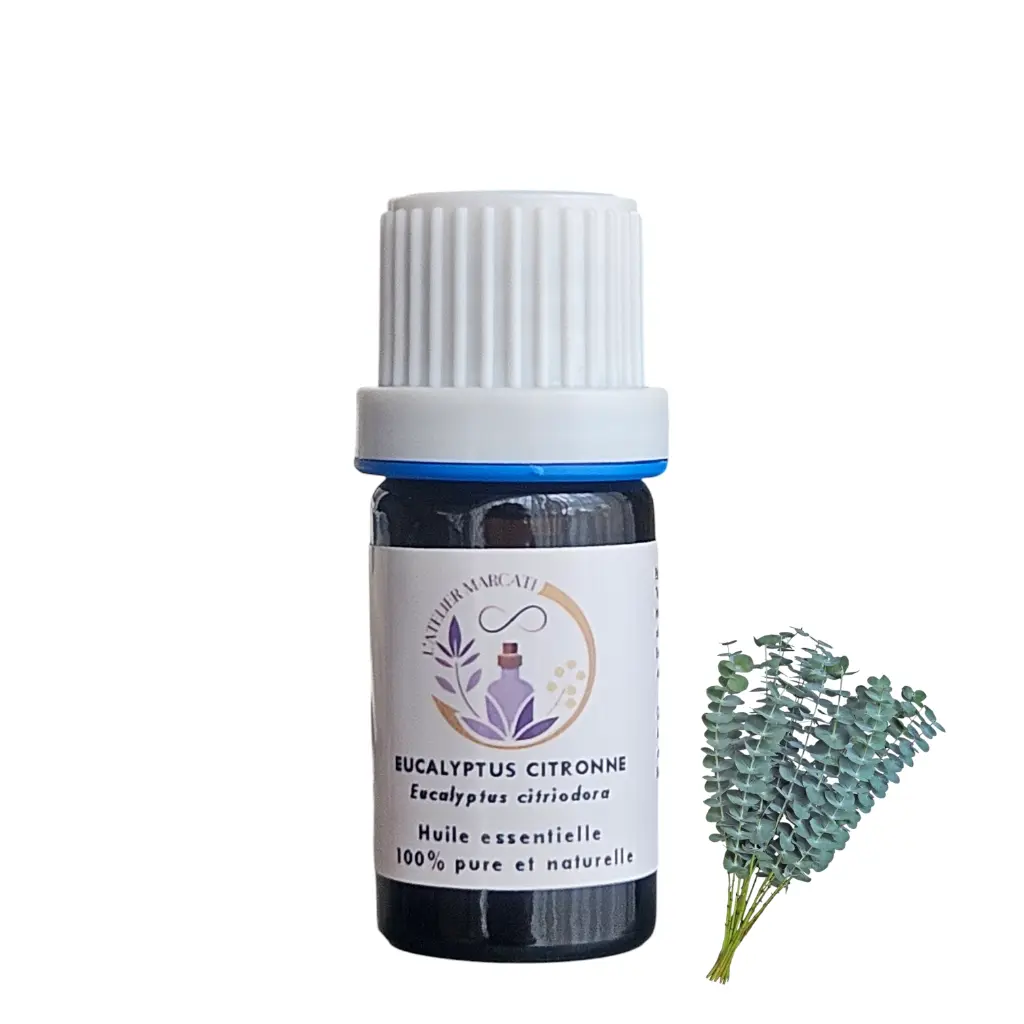Lemon Eucalyptus essential oil
Botanical name: Eucalyptus citraodora

Chemotype and indications
Identity card
Name: Eucalyptus citronné
Botanical name: Eucalyptus citraodora
Distilled part: Leaf
Botanical family: Myrtaceae
Origin: India
Chemical composition:
- Aldehydes: Citronnellal (40 to 80%)
- Esters: Citronnellyl acetate
- Monoterpenols: Citronnellol (15 to 20%), Linalool
- Sesquiterpenes: Beta Caryophyllene
Physical properties and therapeutic indications.
- Analgesic*
- Anti-inflammatory*, genital* and urinary anti-inflammatory*
- Cervicodorsal*, epicondylar*, phalangeal* arthritis*
- Intercostal neuralgia***
- Rheumatoid arthritis*
- Joint rheumatism*
- Skin irritation,*, Shingles*
- Insect bites (mosquitoes)*, Insect repellent (repels insects, vermin, cockroaches, silverfish)*
Emotional, psychic and emotional properties
- Anxiolytic (chronic case)
- Calming, harmonizing and relaxing soothes nervousness, sadness)
Promotes concentration, psychic and intellectual stimulant.
Additional information
Prohibited for: Children under 4 years old, during homeopathic treatment.
Non-toxic for external use, but TOXIC FOR INTERNAL USE.
Irritating for sensitive skin
Legend: * powerful, ** very powerful; *** extremely powerful (power value for the associated pathology)
Reference and bibliographic source: Lily BAYER and Dr Hervé STAUB, (2013) "In-depth Treatise on Phyto and Aromatherapy", Ed. Grancher. p.507.
THE INDICATIONS IN AROMATHERAPY AND THE USE OF ESSENTIAL OILS DO NOT CONSTITUTE A MEDICAL DIAGNOSIS AND DO NOT REPLACE THE ADVICE OF A DOCTOR OR MEDICAL TREATMENTS!



